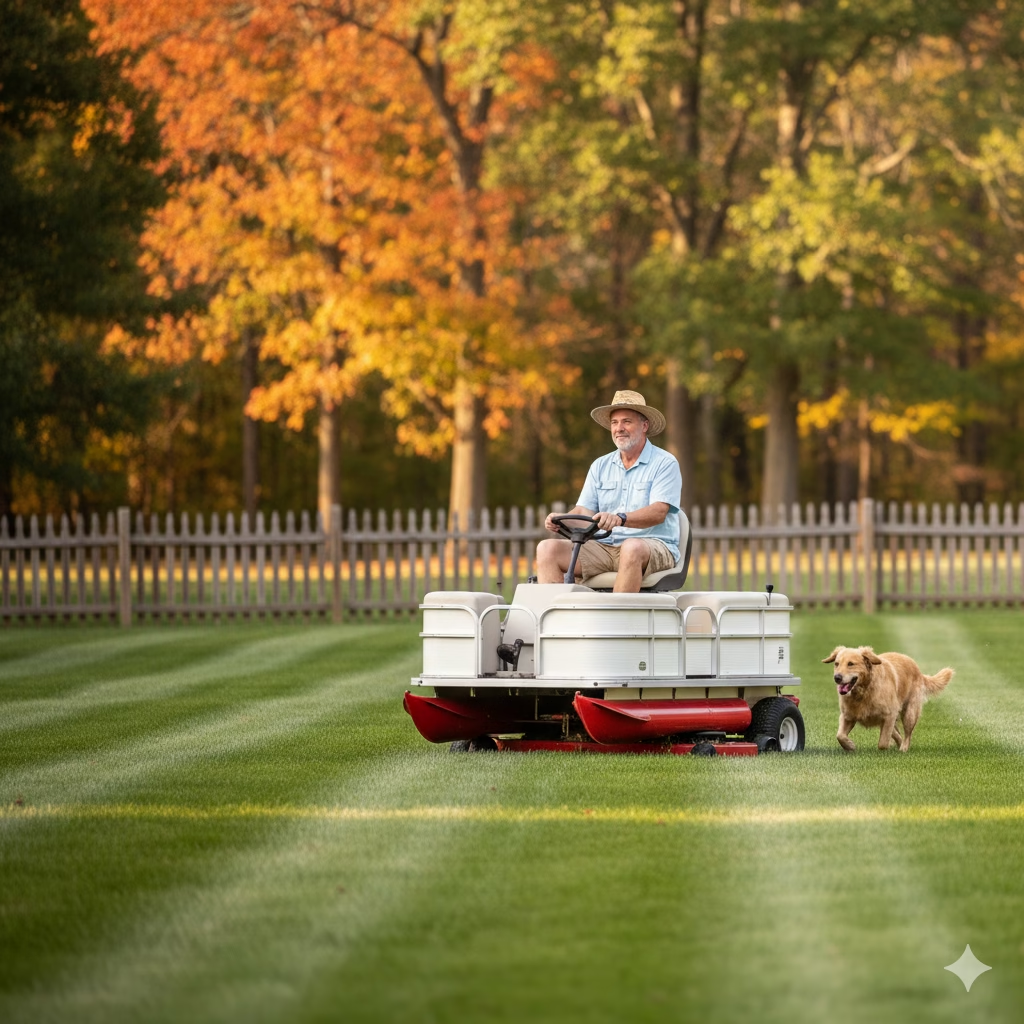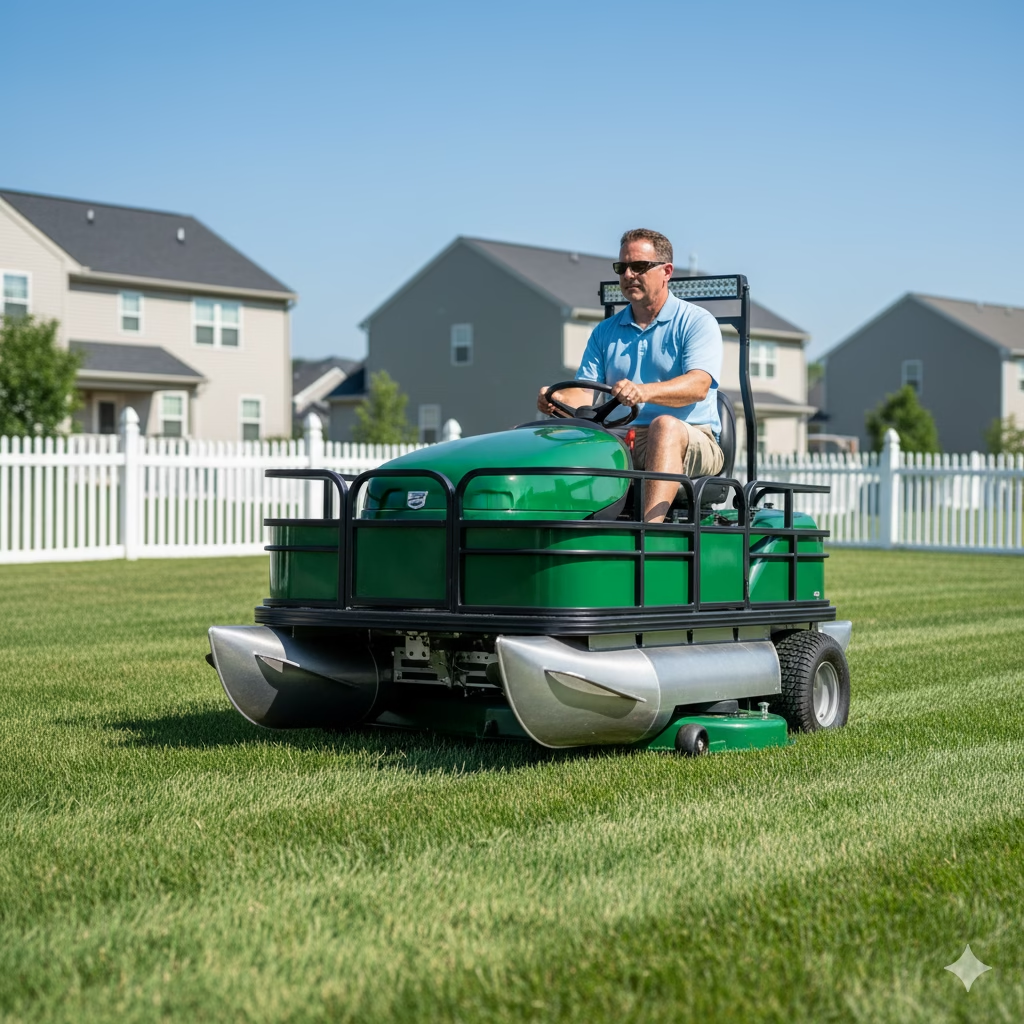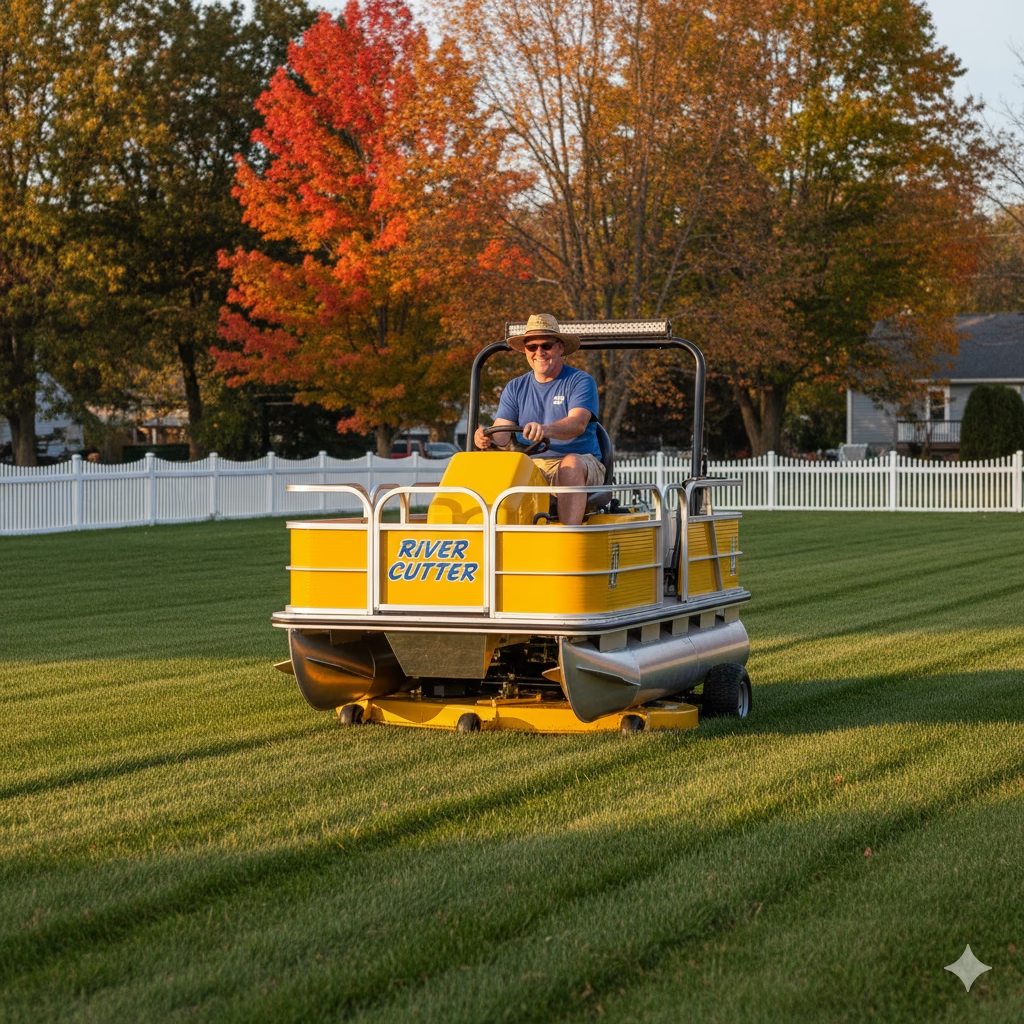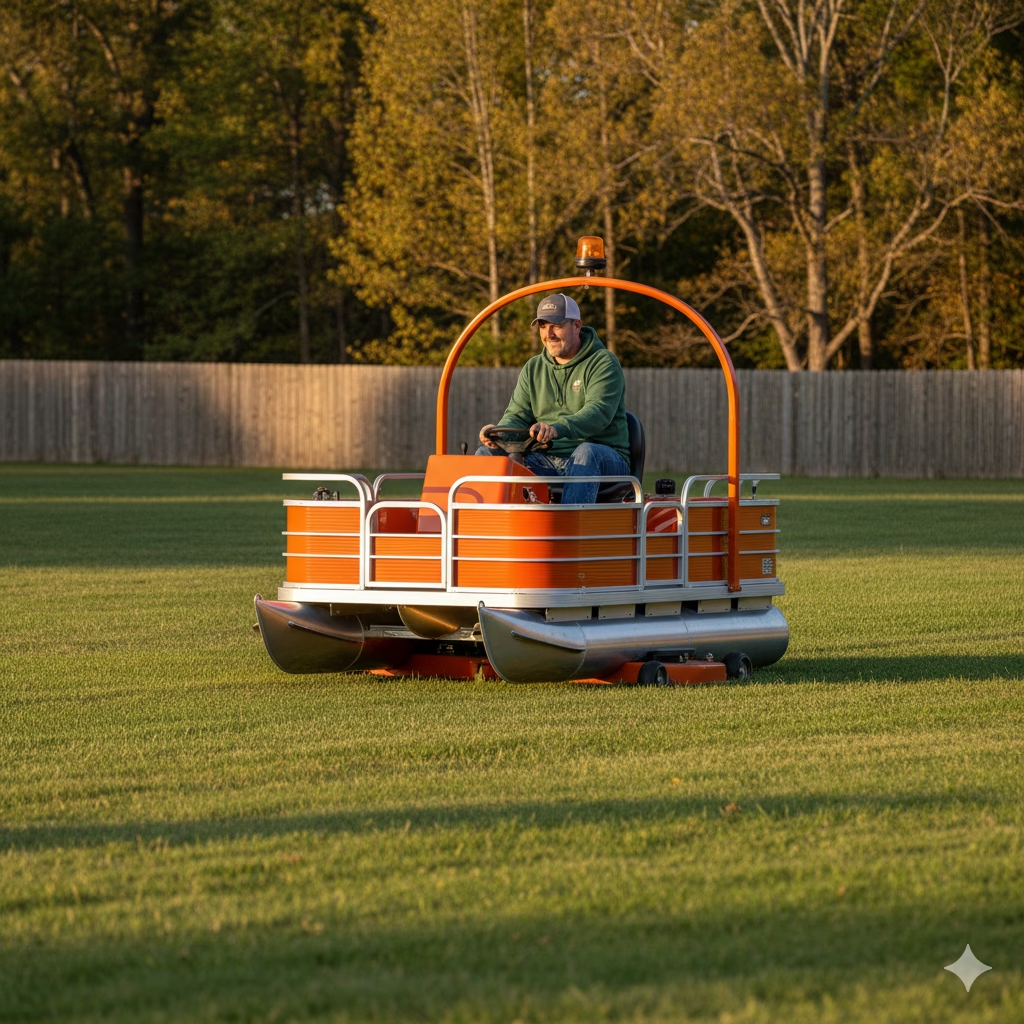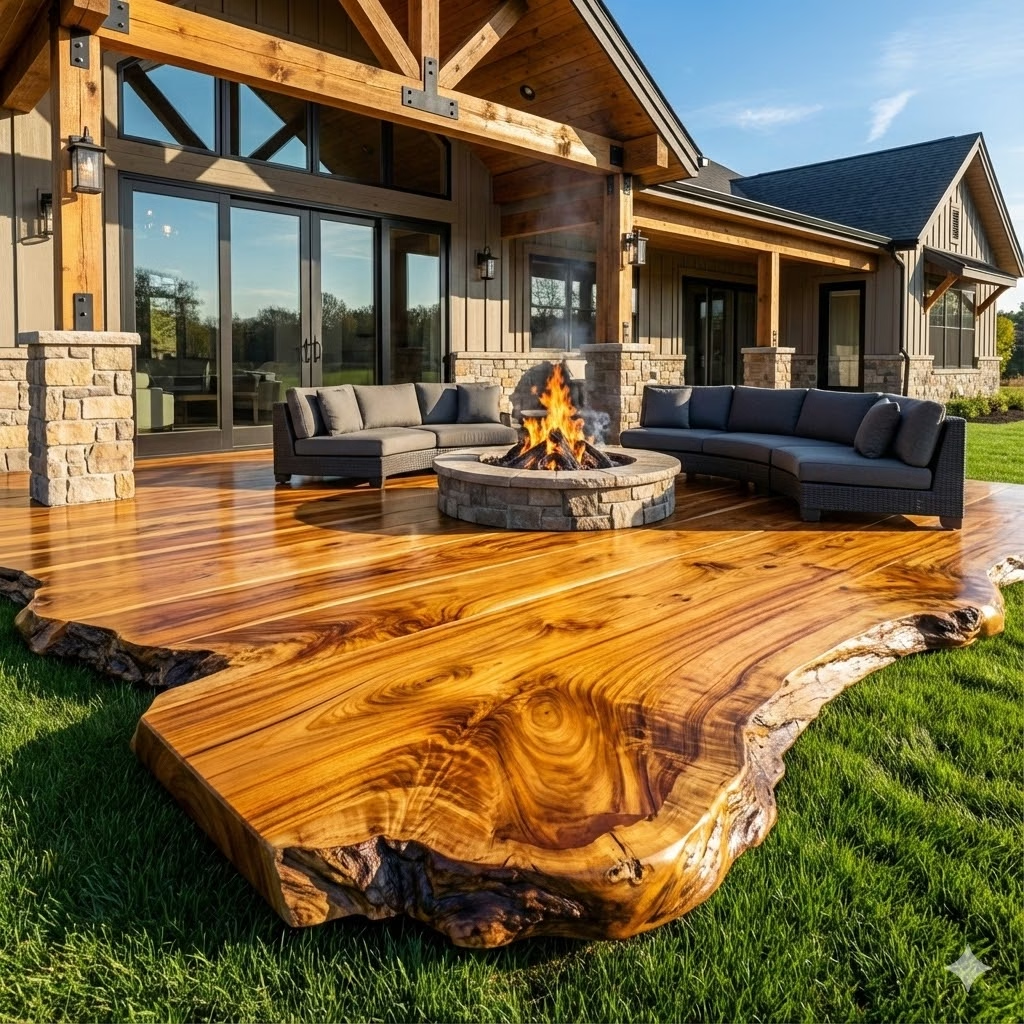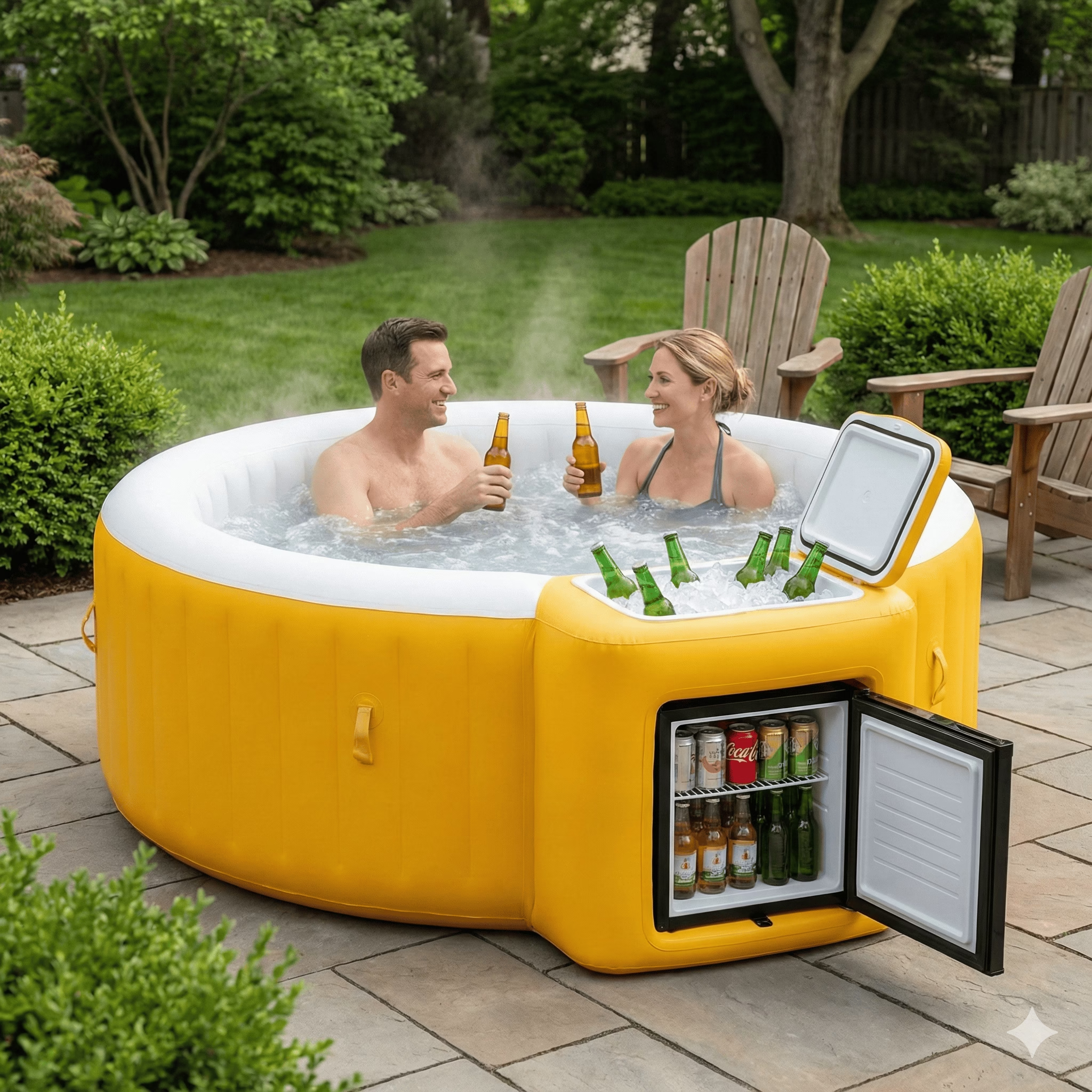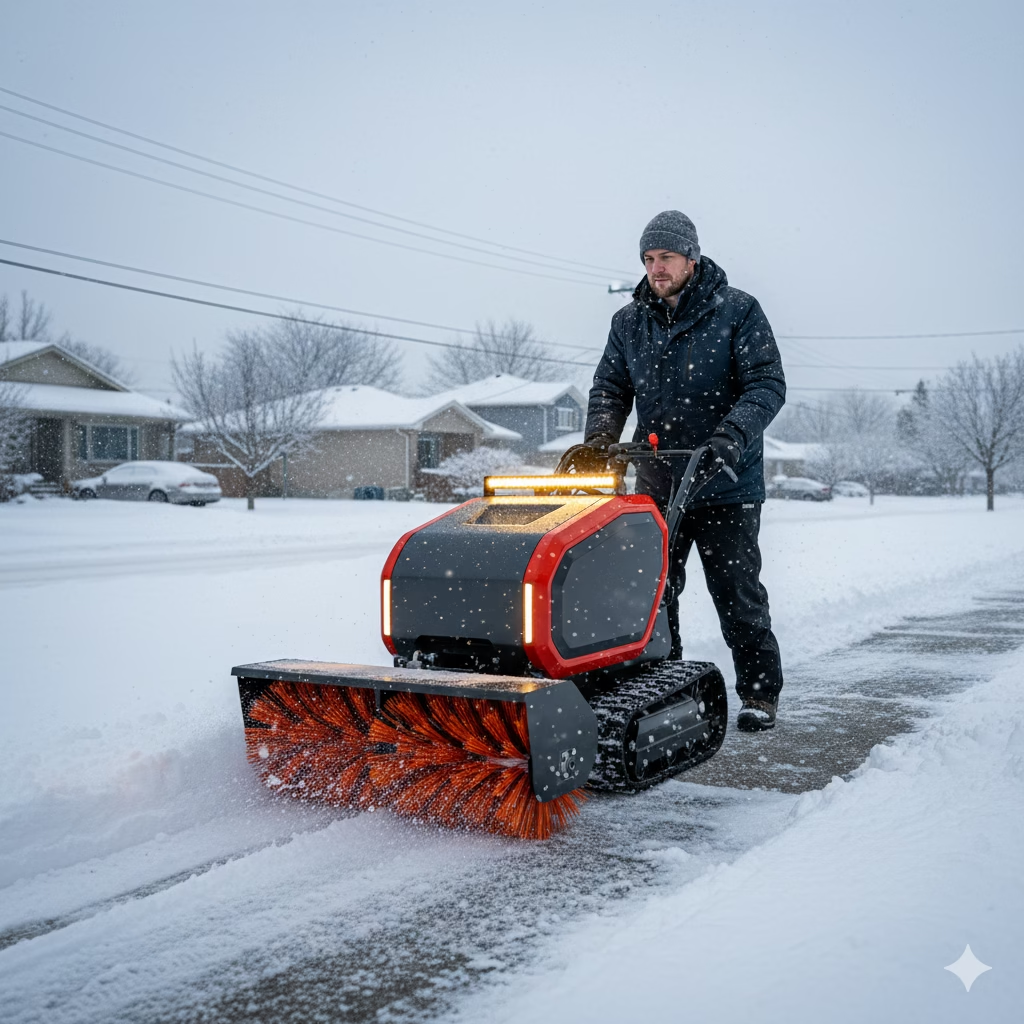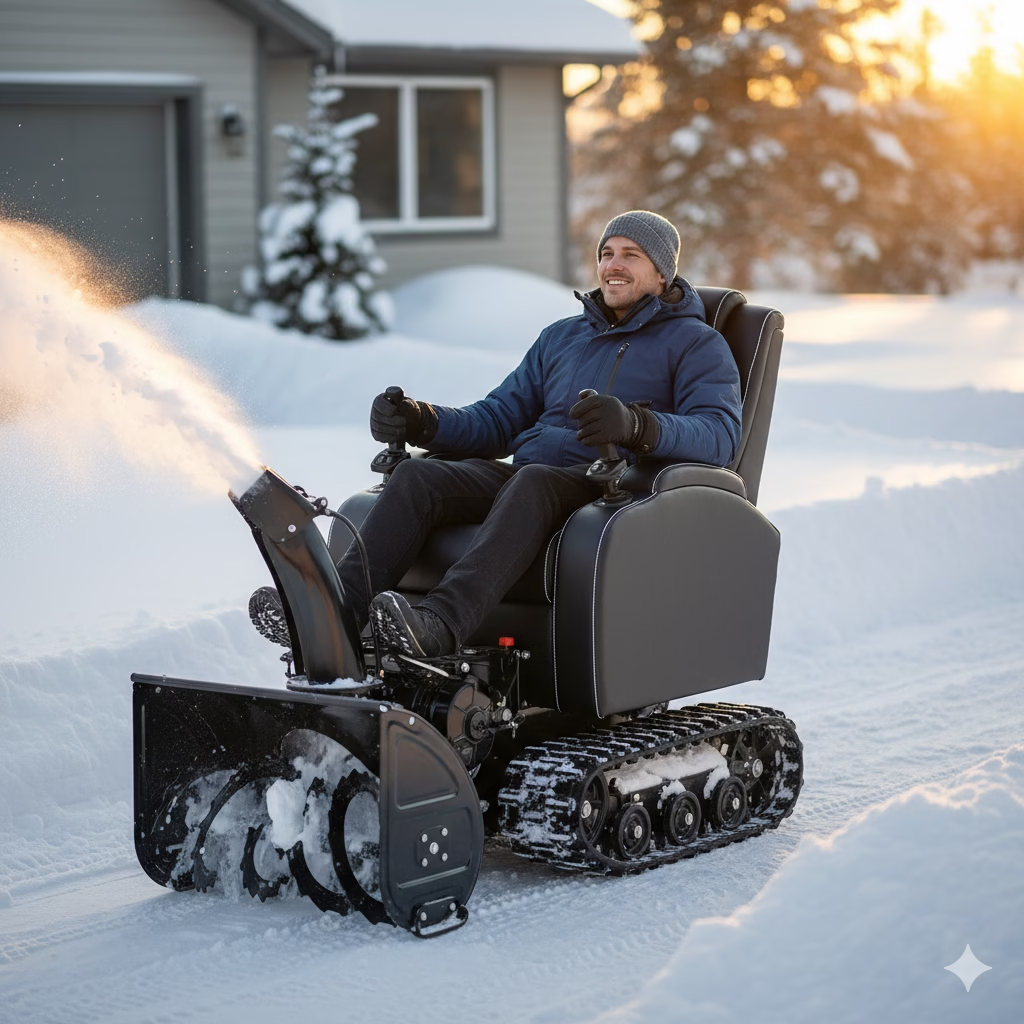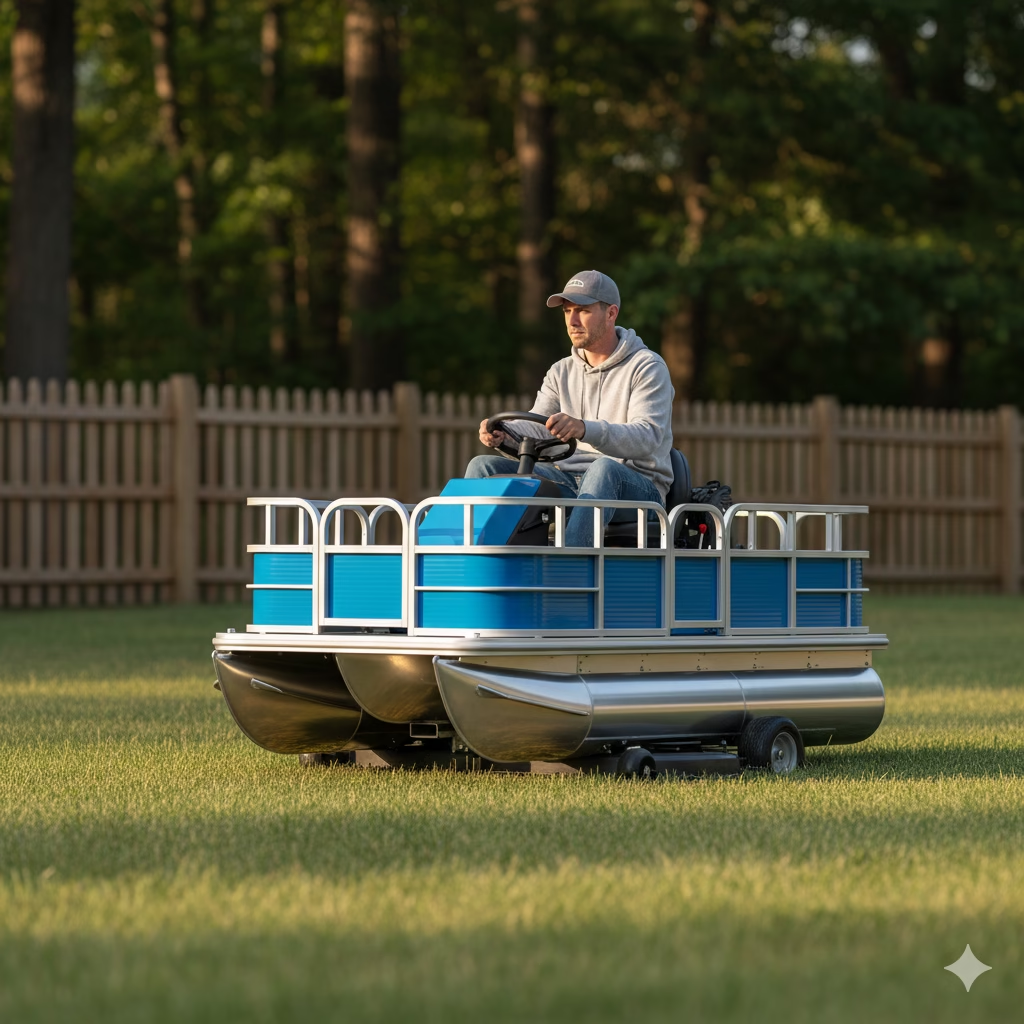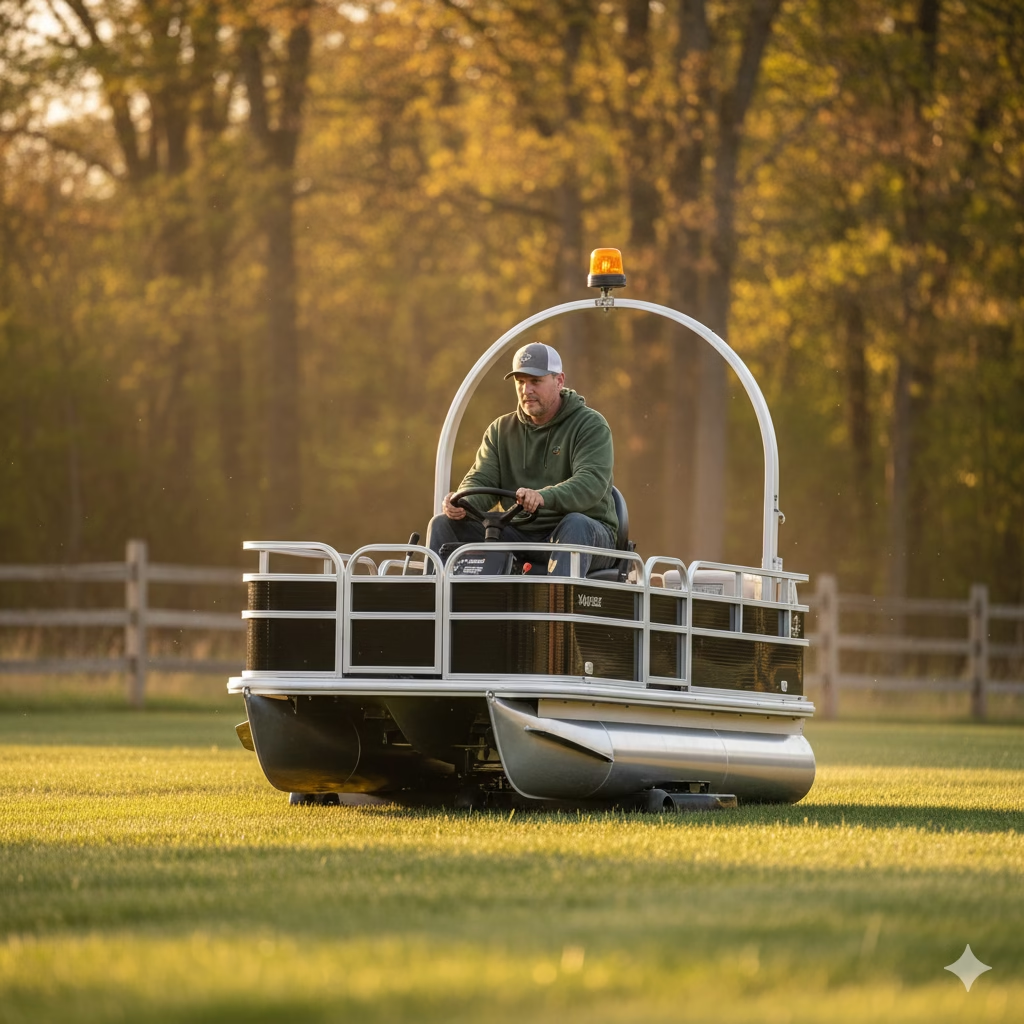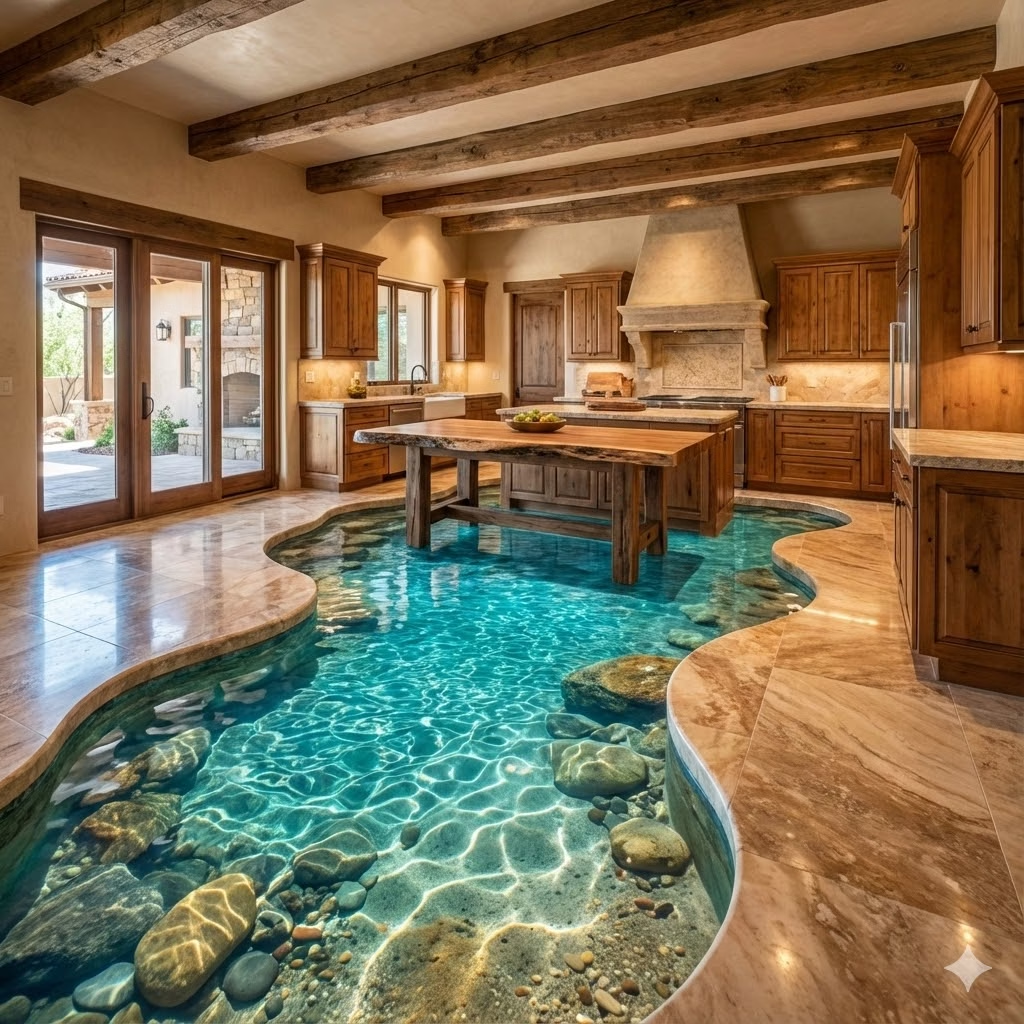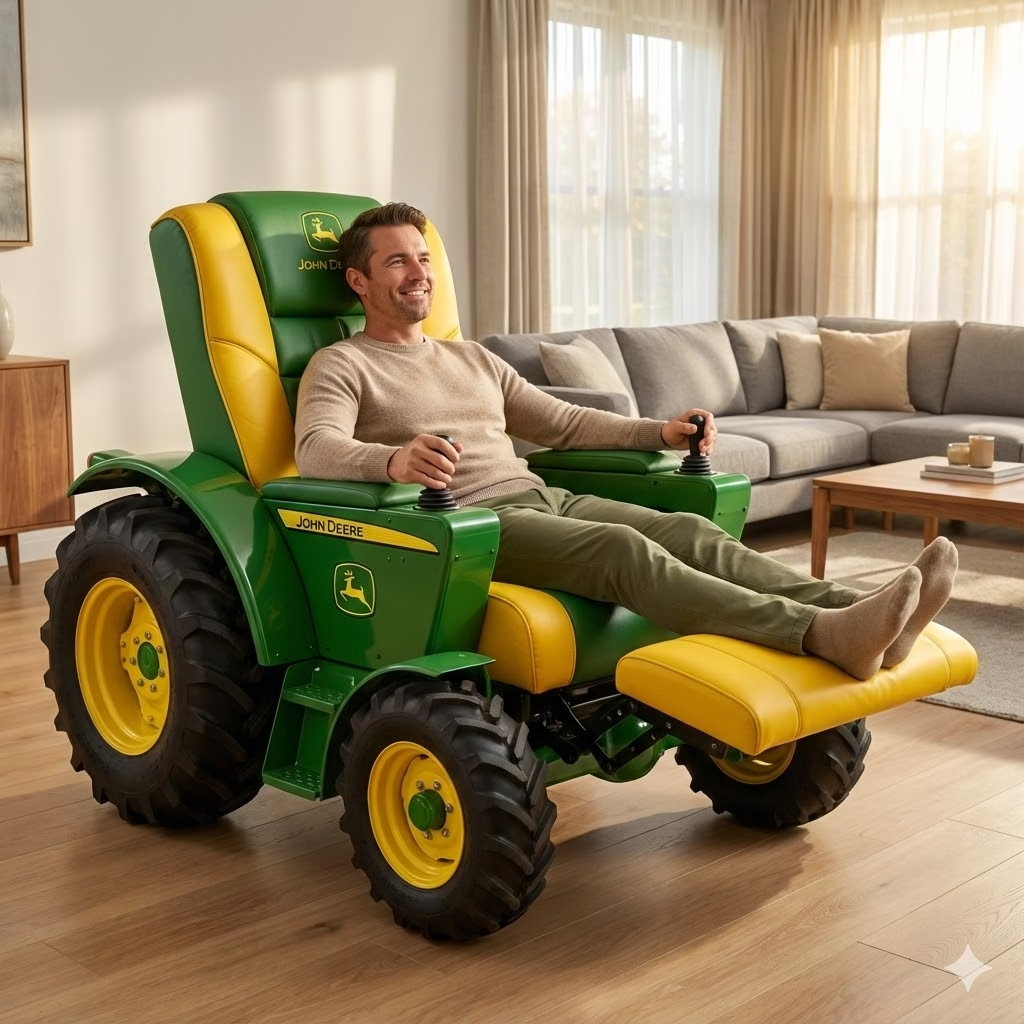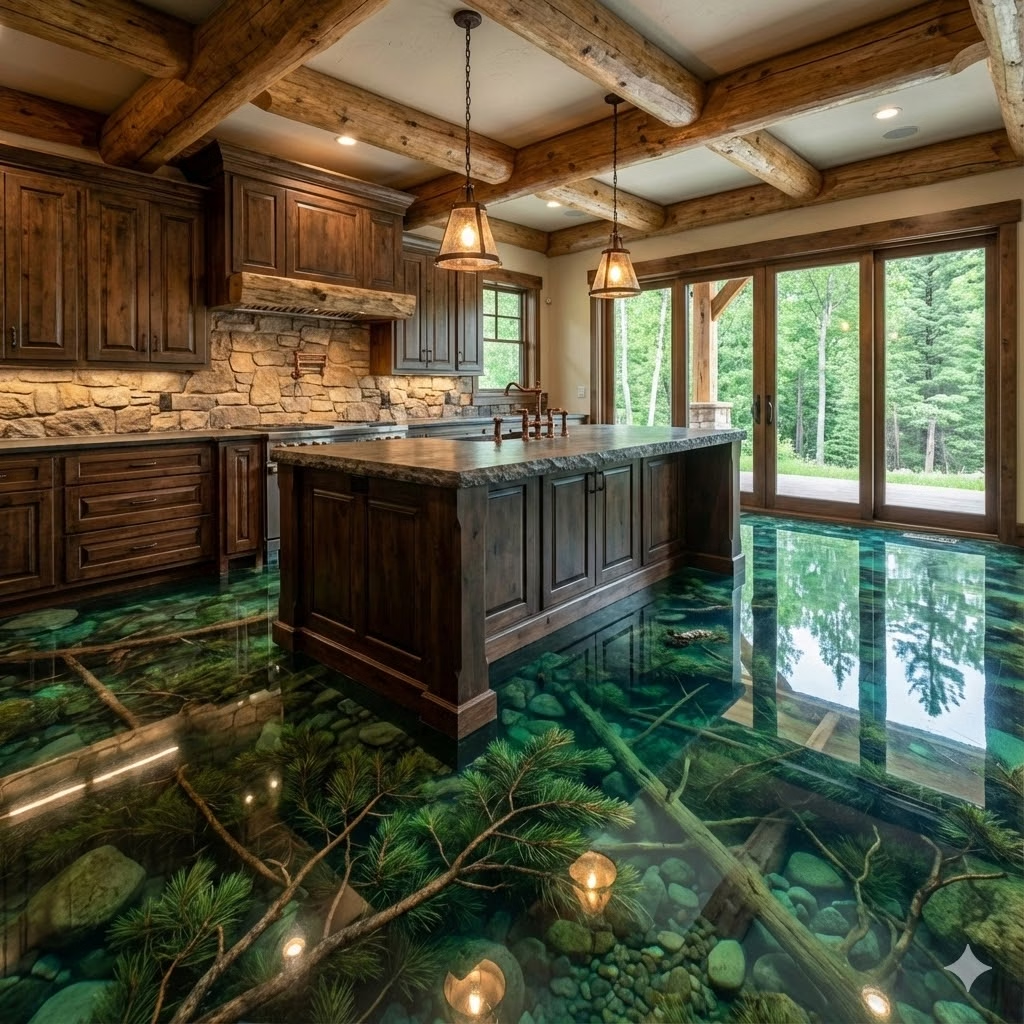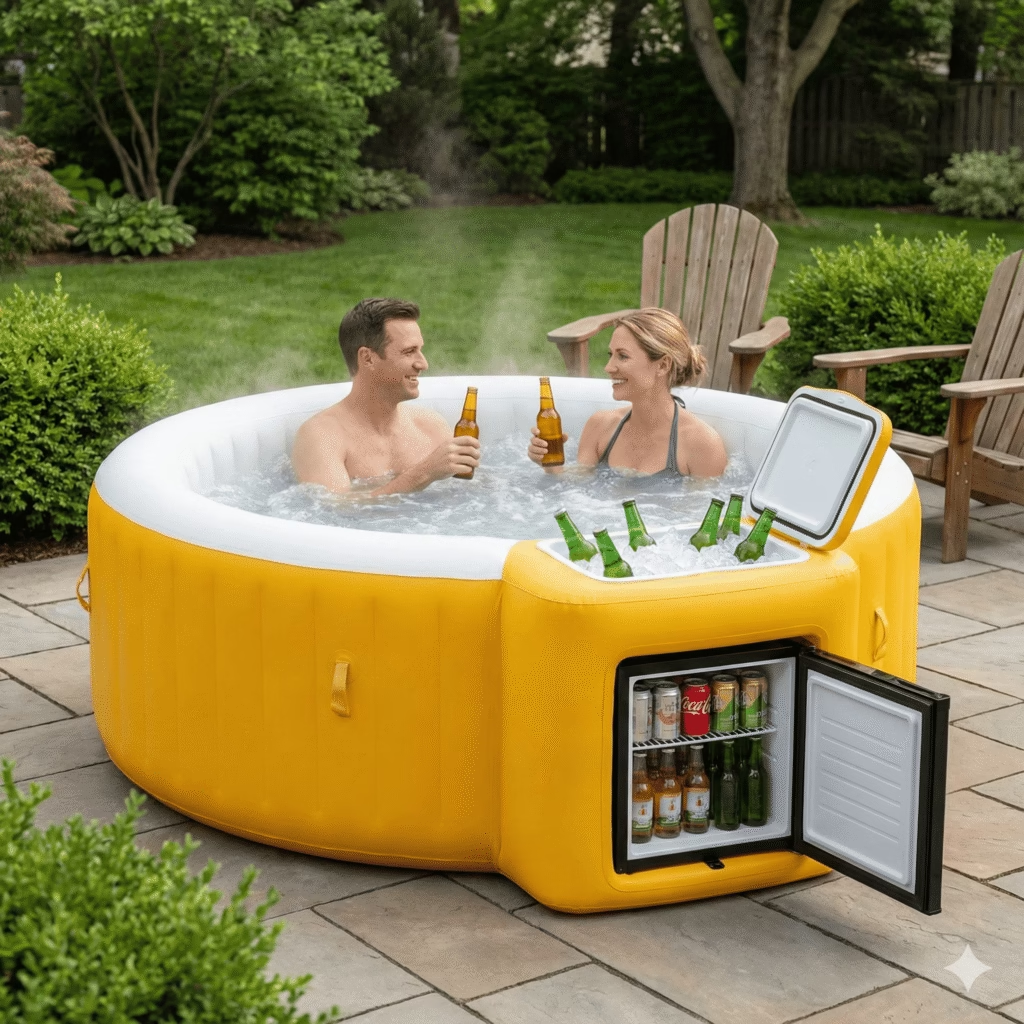Imagine combining the reliable power of a zero-turn riding mower with the leisurely pleasure of a pontoon boat. What sounds like a backyard inventor’s fever dream has become a viral sensation and a legitimate DIY project embraced by creative tinkerers nationwide. Pontoon boat riding mowers—homemade watercraft powered by repurposed lawn mowers—represent the ultimate fusion of ingenuity, humor, and practical problem-solving. Whether you’re navigating weed-choked lakes, seeking an attention-grabbing parade float, or simply want the coolest conversation starter at the marina, these unique vessels prove that sometimes the best innovations come from thinking way outside the box.
What Is a Pontoon Boat Riding Mower?
A pontoon boat riding mower is a custom-built watercraft that uses a riding lawn mower (typically a zero-turn model) as the propulsion system for a pontoon boat. Instead of traditional outboard motors, these ingenious creations utilize the mower’s hydrostatic transmission and drive system to power paddle wheels or other propulsion mechanisms, creating surprisingly effective boats that navigate lakes, rivers, and ponds with style and character.
These aren’t commercial products you’ll find at marine dealerships—they’re the domain of DIY enthusiasts who see potential where others see old lawn equipment. The concept combines mechanical ingenuity with practical problem-solving, resulting in watercraft that are functional, fun, and undeniably memorable.
The Paddle Wheel Design: How It Works
The most popular pontoon boat riding mower design uses paddle wheels for propulsion, offering distinct advantages over traditional propellers.
Roy Phlipot’s Pioneer Design
One of the most celebrated examples comes from Roy Phlipot of Scott, Ohio, who built a one-of-a-kind paddle wheel pontoon boat powered by an old Dixon zero-turn riding mower. The boat measures 18 ft. long by 8 ft. wide and floats on a pair of 20-ft. long pontoons, with propulsion provided by a pair of 4-ft. diameter paddle wheels about halfway back on the boat. The paddle wheels are powered by the mower, which is bolted to the deck.
Phlipot started with a 1980’s Dixon mower equipped with a hydrostatic transmission, removed the wheels and deck, then used 3/4-in. cold rolled steel to extend the mower’s drive axles out to both sides of the boat, installing a sprocket with keyway on the outside ends of the axles in order to drive the paddle wheels.
Why Paddle Wheels?
The genius of paddle wheel propulsion becomes clear when considering typical lake conditions. Heavy weed beds can easily foul traditional propellers, but paddle wheels simply push through vegetation without entanglement. The plastic paddles are designed so the top edge of each paddle stays above the water to avoid picking up weeds, with the paddles just pushing off the weeds without pulling them up.
The steady forward motion makes for a comfortable ride and is also easy on the drivetrain, with one paddle coming out of the water as the next one goes in, resulting in constant contact with the water.
The Kremer Brothers’ Approach
Another notable example comes from the Kremer brothers of Minnesota, who combined a pontoon with a zero-turn riding lawn mower to create a paddle boat that’s been seen on lakes and in parades. Made from a pontoon and a zero-turn riding lawn mower, the paddle boat appeared in Wilmont’s 125th anniversary parade and at the Windsurfing Regatta in Worthington.
Their build exemplifies the trial-and-error process typical of these projects. They worked on it for a day or two at a time, and things seemed to fall into place without following rigid plans. The goal was simply to see if it could be done, proving that sometimes the best innovations come from experimentation rather than detailed blueprints.
Key Components and Construction
Choosing the Right Mower
Zero-turn riding mowers are the preferred foundation for these builds due to their hydrostatic transmissions, which provide excellent low-speed control and impressive torque. The independent wheel control that makes zero-turns so maneuverable on lawns translates to excellent steering capability on water when properly configured.
Older 1980s-era Dixon, John Deere, or similar commercial-grade mowers with robust hydrostatic drives work particularly well. These vintage machines were built with heavy-duty components that handle the stress of propelling a boat through water.
Pontoon Selection
The pontoon structure itself can come from various sources: actual pontoon boats that need motors, custom-built pontoons fabricated from barrels or tubes, or salvaged pontoons from decommissioned boats. The key is ensuring sufficient buoyancy to support the combined weight of the mower, passengers, and any additional equipment.
Propulsion Systems
While paddle wheels dominate the design landscape, creative builders have experimented with alternative propulsion including direct-drive propellers, jet drive systems, and even modified trolling motor setups powered by the mower’s electrical system.
Structural Integration
The mower must be securely mounted to the deck, typically with heavy bolts through reinforced mounting points. The deck itself needs structural integrity to support both static weight and dynamic forces during operation. Many builders use marine-grade plywood or aluminum decking for durability and water resistance.
Performance Characteristics
Speed and Maneuverability
Don’t expect to win any races, but pontoon boat riding mowers deliver respectable performance for leisurely cruising. The boats are very maneuverable and fun to drive, with considerable pulling power that can push through heavy weeds without slowing down. Most designs cruise comfortably at 3-6 mph, perfect for exploring shorelines, fishing, or simply enjoying time on the water.
The zero-turn capability translates to impressive maneuverability on water, allowing operators to navigate tight spaces and dock with precision that traditional pontoons struggle to match.
Weed Handling
Perhaps the greatest practical advantage is weed performance. Traditional outboard motors bog down or stall in heavy vegetation, but paddle wheel systems push through effortlessly. For lakes with significant weed growth, this capability transforms unusable waterways into accessible recreation areas.
Stability
The wide beam of pontoon designs provides excellent stability. The mower’s weight sits low and centered, contributing to a stable platform that handles wakes and wind without excessive rocking.
Building Your Own Pontoon Boat Riding Mower
Planning Phase
Before cutting metal or spending money, careful planning prevents costly mistakes:
Design Goals: Determine primary use—fishing platform, parade float, general recreation, or weed navigation specialist.
Budget: Costs vary dramatically based on whether you’re using salvaged materials or purchasing new components. Budget $500-$3,000 depending on your approach.
Skills Assessment: These projects require welding, mechanical aptitude, and problem-solving abilities. Be honest about your capabilities or partner with skilled friends.
Safety Considerations: Water adds complexity and risk. Ensure your design includes proper flotation, stability, and emergency protocols.
Essential Skills and Tools
Successful builds require metalworking capabilities including welding (MIG or stick), metal cutting and grinding, drilling and fabrication, and basic marine construction knowledge. Tool requirements include welding equipment, angle grinder, drill press or quality hand drill, measuring and layout tools, and hand and power tools for assembly.
Step-by-Step Process
Acquire Base Components: Source a suitable riding mower with hydrostatic transmission and pontoons or materials to build them.
Design Propulsion System: Decide on paddle wheels or alternative propulsion and plan mechanical connections from mower drivetrain to propulsion system.
Fabricate Mounting Systems: Create sturdy mounts that secure the mower to the deck, extend drive axles if using paddle wheels, and build paddle wheel assemblies or other propulsion components.
Construct Deck Platform: Build or modify the deck to accommodate the mower, ensure adequate structural support, and add railings, seats, or other amenities as desired.
Assembly and Testing: Mount all components, check balance and stability, and conduct careful water testing in controlled conditions.
Refinement: Address any issues discovered during testing, adjust paddle wheel configuration if needed, and add finishing touches like paint, seating, or storage.
Safety Considerations
While pontoon boat riding mowers are fun, they involve real risks that demand respect:
Flotation: Ensure adequate flotation for all anticipated passengers and conditions. Add extra flotation beyond minimum requirements for safety margins.
Life Jackets: Always wear appropriate personal flotation devices. No exceptions.
Testing: Conduct initial tests in calm, shallow water with minimal traffic. Gradually expand testing as confidence in the design grows.
Mechanical Reliability: Ensure all connections are secure and robust. Mechanical failures on water create dangerous situations.
Navigation Rules: These boats must follow all local boating regulations and navigation rules. Check registration requirements in your jurisdiction.
Weather Awareness: Avoid operation in high winds, storms, or rough water. These boats lack the power and seaworthiness for challenging conditions.
Legal and Regulatory Considerations
Before launching your creation, understand local regulations. Most jurisdictions require boat registration for powered watercraft, regardless of propulsion type. Your pontoon boat riding mower likely falls under these requirements.
Check with local authorities about specific rules governing homemade watercraft, horsepower ratings (if applicable to non-traditional propulsion), and any restrictions on paddle wheel vessels.
Using Riding Mowers to Move Pontoon Boats on Land
An interesting related application involves using riding mowers to move pontoon boats on trailers for storage or launching. Many boat owners use riding tractors to maneuver boats short distances, particularly in situations where backing a truck is difficult. Marine dealers commonly use riding mowers to move boats around their yards, finding them more maneuverable than trucks in tight spaces.
However, this application requires caution regarding tongue weight, braking capability, and terrain conditions. The weight of most pontoon boats can overwhelm typical lawn tractor braking systems on slopes.
The Viral Appeal
Videos of pontoon boat riding mowers have garnered millions of views on social media, with people fascinated by the creativity and functionality of these unusual vessels. They represent the American spirit of DIY innovation—taking ordinary items and reimagining their potential in extraordinary ways.
These boats appear in parades, lake events, and community celebrations, where they never fail to generate smiles, laughter, and admiration for the builders’ ingenuity.
Conclusion
Pontoon boat riding mowers represent creative problem-solving at its finest. They tackle real challenges like weed-choked waterways while embracing fun, personality, and innovation. Whether you’re considering building your own or simply appreciate the creativity of others, these unique watercraft remind us that some of the best solutions come from thinking differently and refusing to accept conventional limitations. In a world of mass-produced boats and standardized designs, pontoon boat riding mowers celebrate individuality, ingenuity, and the joy of creating something truly unique. They prove that with creativity, basic mechanical skills, and willingness to experiment, you can literally turn a lawn mower into a boat—and have an absolute blast doing it.

